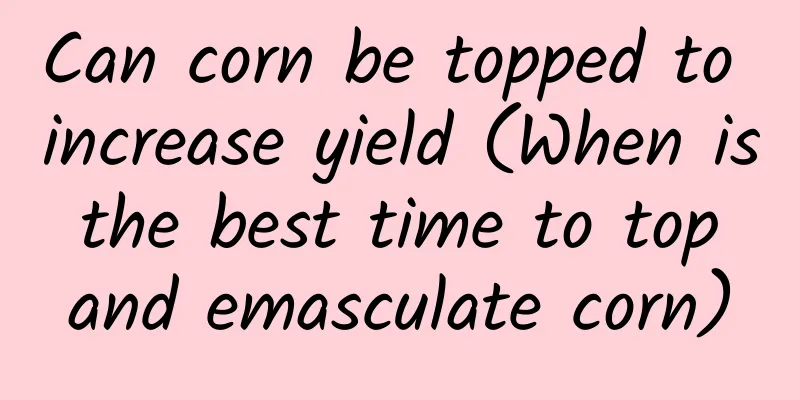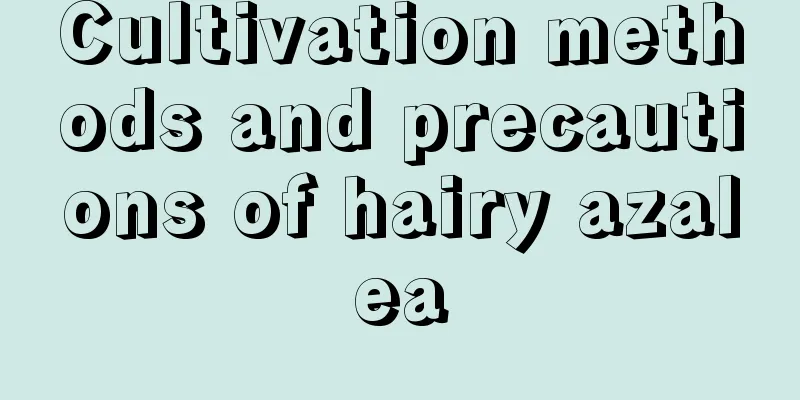Can corn be topped to increase yield (When is the best time to top and emasculate corn)

|
When I was a child, when the corn was blooming and pollinating, people would pull out the corn heads from every other row. They would also use a long wooden stick with a wooden plate to shake the corn ears, and then touch the stamens on the corn cobs. I was too young at that time and didn’t understand, so I asked them why. They said, “Once the corn has its head removed, it will be as strong as an ox.” So, detasseling and artificial pollination of corn can increase its yield and reduce the occurrence of bald heads and missing grains. Later, I learned that this is to remove the tassels and artificial pollination of corn . The purpose of removing the tassels of corn is to achieve more grains, heavier grains, and high yields. It is a management measure during the flowering and grain stage . Corn detasseling is actually to remove the apical dominance, so that nutrients can flow back to fully supply the growth of corn cobs, the expansion of grains, and increase yields. When detasseling corn, you must pay attention to the time and method. 1. Time of emasculationCorn detasseling is the process of pulling out the male ears of corn just as they are about to emerge but before they bloom and shed pollen. It is best to detassel them after the dew has dried up in the morning . Maize emasculation can reduce nutrient consumption, improve ventilation and light transmission conditions, and facilitate filling and maturity. If it is too early, it is easy to remove the leaves and affect photosynthesis. If it is too late, the pollen has already dispersed, and the meaning of emasculation is lost. 2. Methods of emasculationMaize emasculation should be done in alternate rows or plants, and the number of emasculated plants should generally account for 35%-40% of the whole field, and no more than half at most. Do not emasculate the edges of the field to facilitate pollination of marginal corn. When emasculating, weak plants should be removed and strong plants should be retained, and the upper leaves should be retained. When the corn is too tall, you can gently tilt the corn plant, then hold the tassel with your hand and lift it up gently to pull out the tassel. 3. NotesThe number of corn tassels removed should not exceed half of the total number. It is not advisable to remove tassels in hot and drought conditions, rainy weather, or in plots with uneven plant growth or serious plant shortages, otherwise it will affect pollination and result in reduced yields. When emasculating, be careful not to remove the leaves, damage the functional leaves, or break the stems. This refers to detasseling of corn, not removing the tassels from the entire field. Otherwise, without pollen, how can there be pollination, and how can there be a high yield of corn? After the corn is pollinated, all remaining tassels can be removed. Artificial castration is an effective measure to increase production, which is actually not difficult for farmers to understand, such as pinching and topping fruits and vegetables, pinching and pruning fruit trees, etc. Isn't it just to remove the apical dominance and let the nutrients flow back to the fruit growth? It is to control the vegetative growth and promote the reproductive growth. The garlic stalk raising and corn emasculation have the same purpose . That being said, garlic stems can be sold for money and can greatly increase yields. Although detasseling corn can also increase yields, how much can it increase? I checked and found that alternate-row emasculation plus artificial pollination can increase yield by 11.9%-13%. Let's assume a 15% increase in yield, which means we can increase corn production by about 200 kilograms and sell it for an extra 300 yuan. Artificial detasseling and pollination need to be done 2-3 times. It takes 3-5 days to do this work for one acre of corn. You can earn 500 yuan or even thousands of yuan by working for these 3-5 days. Is it worth it for you to detassel? Is it cost-effective? I think there is one type of person who can do this, that is the corn seed breeding department. A seed can be sold for more than 1 cent! If the yield increases by 200 kilograms, how much more can it be sold for? ! This cow is worth a lot of money. So the pictures I used are all from this industry. So, although corn can be as strong as a cow after the head is removed, the cow is not very valuable and it is not worth it for farmers to work with it. Weighing the pros and cons, I still think that we should just let it grow. It doesn't matter how it grows. What's the difference between 1,200 jin per mu and 1,500 jin per mu? If there's more here, there's less there! Can soil really produce gold? ! |
Recommend
When is the right time to sow lettuce?
Lettuce sowing time Lettuce is a biennial herb. T...
How to reproduce the hollyhock
What are the propagation methods of mountain plum...
How to prune the branches of the Fortune Tree?
The rich tree is also called locust tree, locust ...
What soil should be used to grow Hongyun Dangtou
1. What kind of soil to use 1. This is a flower t...
How many days does it take for garlic to sprout?
Garlic is a widely cultivated vegetable . It is n...
Rose cultivation methods and precautions
Roses are very easy to grow. Their roots have a s...
Pink Eustoma Flower Language
1. Flower Language The flower language of this co...
How much does a pot of bougainvillea cost?
1. Price Bougainvillea is more common in the sout...
How to water the fire festival?
When to water If you want to know how to water th...
How to make loquat seeds germinate quickly
Loquat seed germination environment After eating ...
Cultivation methods and precautions of Oxalis triangularis
1. Soil It likes a shady and humid environment an...
When and how to repot orchids
1. Time to change pots It is best to repot orchid...
Persimmon bonsai maintenance methods Potted persimmon tree planting technology and management
Persimmon bonsai should usually be maintained in ...
How to propagate the coral cactus and what to pay attention to
How to propagate coral cactus Coral reef is a pla...
Reasons for the shrinkage of the money tree trunk
1. Excessive watering The shrinkage of the money ...









